In 1944, just 3 days before the Chinese New Year Eve, villagers of Petagas was awaken by the distant firing of machine gun in a silent morning. In the next 3 days, they still heard cries and groans. They knew something went very wrong but nobody dared to check it out. 176 Kinabalu Guerrillas members were massacred by Japanese army, making 21 Jan 1944 the bloodiest day in Sabah history.
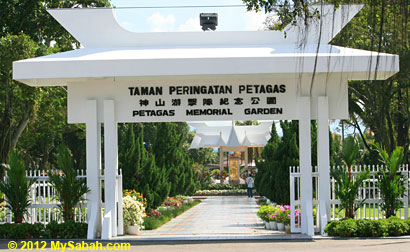
However, these fallen heroes are not forgotten even after more than half a century. 9 KM from Kota Kinabalu city and in front of Kota Kinabalu International Airport terminal 1, a Petagas War Memorial Garden was built on the mass execution site to honour those who defended Sabah during World War II.
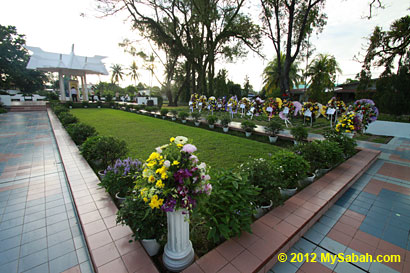
Above: under the green grass is where the Kinabalu Guerrillas members and others buried.
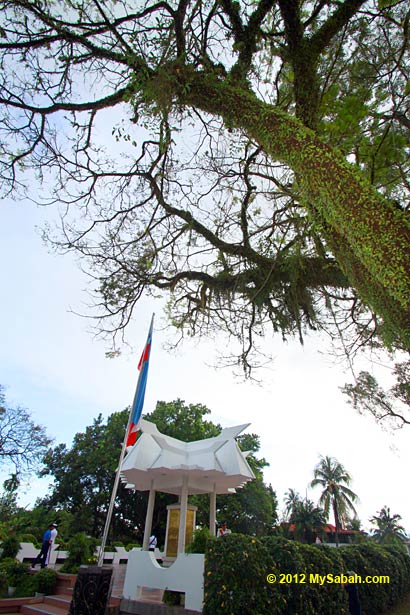
Above: monument with names of the victims inscribed on the plaque.
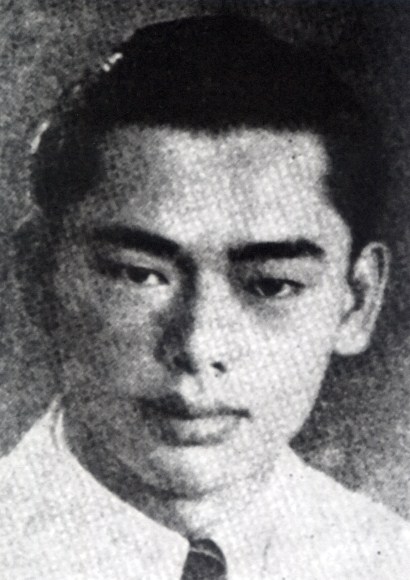
Above: Albert Kwok (郭益南), the leader of Kinabalu Guerrillas.
Albert Kwok was born in Kuching (Sarawak) and studied Chinese medicine in China. He came to Sabah in 1940 and worked as doctor. To resist the iron rules of the Japanese, Albert Kwok organized Kinabalu Guerrillas and took charge as commander-in-chief in 1943. He launched the Double Tenth Revolt with a guerrilla force of 300 men in the eve of 10 Oct 1943. The Japanese was attacked by surprise and more than 60 of them were killed, though the guerrilla was mainly machetes-wielding attackers with very limited firearm. You may click the photo above for more history of Double Tenth Revolt.
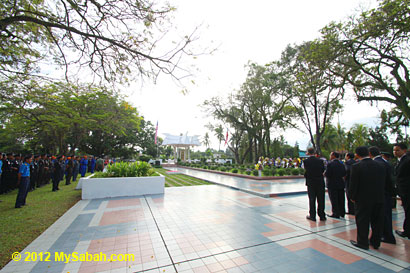
Above: Sabah Government and the descendants of the guerrillas hold a memorial ceremony to commemorate the fallen heroes every year on 21 Jan. 20 uniform bodies also send their troops.
Albert Kwok and his Kinabalu Guerrillas managed to take control of Tuaran, Menggatal and Jesselton (former name of Kota Kinabalu). However, being poorly-armed and facing the Japanese reinforcement from Kuching 3 days later, the guerillas were forced to retreat to hills in Menggatal. After two months of fighting, Japanese army threatened to massacre 400 people in Shantung Valley if Albert Kwok refused to surrender. Albert Kwok turned in himself on 19 Dec 1943 and locked in Batu Tiga prison with 400 others. He was executed with other guerrillas members in Petagas at the age of 23.
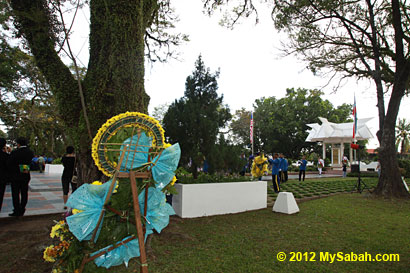
Above: wreath-laying ceremony is carried out in the annual memorial service. In 2012, I noticed a very beautiful wreath standing quietly behind.
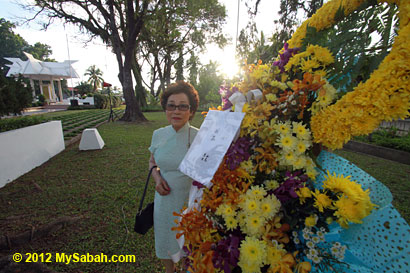
Above: Madam Lim and the wreath given by a Japanese couple.
The father and elder brother of Madam Lim were also killed here. She told this story to a Japanese couple. They felt so sorry that they requested Madam Lim to buy a wreath (cost MYR300!) for the memorial service. Younger generation of Japanese have no idea about the cruelty of their army in World War II. Their textbooks and education rationalize and glorify the war as a holy battle to liberate Asia from western imperialism.
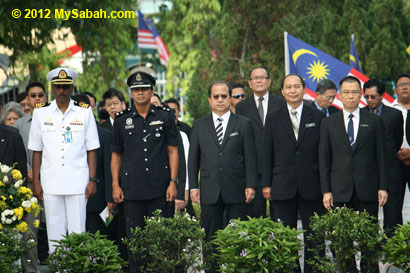
Above: government representatives in Petagas War Memorial service
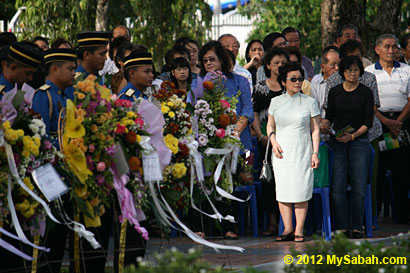
Above: relatives and descendants of victims.
It must be a painful memory for them even today. The following were the happening on 21 Jan 1944:
1. 176 prisoners transported by 6 covered goods-vans of a train from Batu Tiga prison at 3am.
2. They knew their fate. 3 of them resisted the escort and were slashed to death at prison door by sword.
3. The train arrived Petagas, where deep pits were prepared for them. Some held onto the train and refused to leave. Their fingers & hands were cut off and a few were hang on sliding door.
4. Albert Kwok was beheaded by double-handed sword with 4 other leaders (namely, Charles Peter, Chan Chau Kong, Kong Tze Phui, Lee Tek Phui)
5. The rest was shot by machine gun or bayoneted. Their bodies were dragged, pushed or kicked into the trenches.
6. Some were still alive and village nearby could hear their cries & groans for next 3 days, day & night.
3 days later was the eve of Chinese New Year 1944. It’s already so overwhelming to imagine how they families felt when they looked at the empty seat of the deceased, on the traditional family reunion day. For those who were not executed that day, 131 were sent to Labuan, where they were tortured and humiliated by Japanese in front of people. Only 9 of them survived.
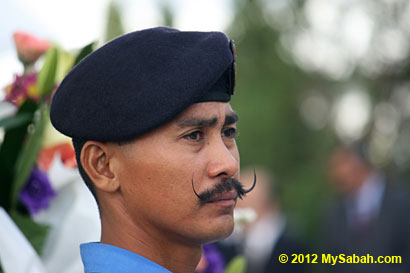
Above: commander of memorial service, nice mustache.
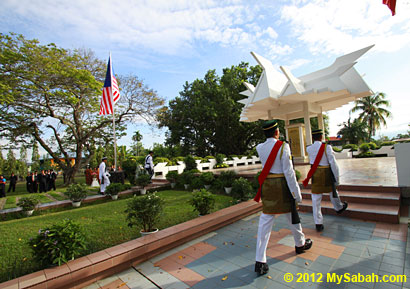
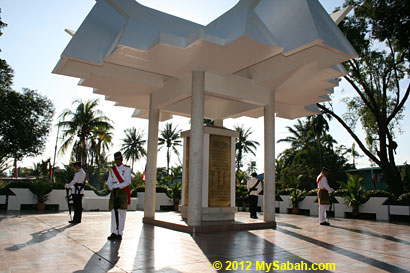
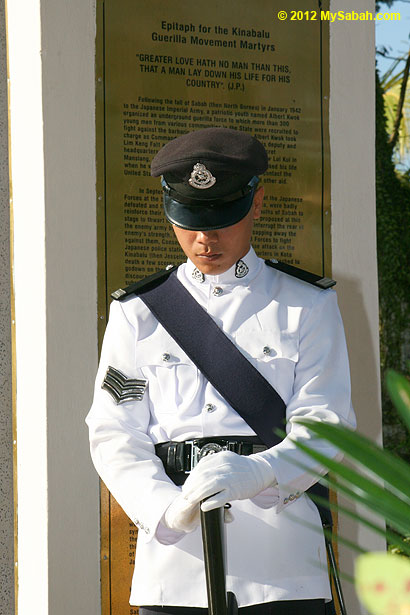
The memorial service starts after 8am. First, 4 guards of honor marches to the monument and stand at 4 sides.
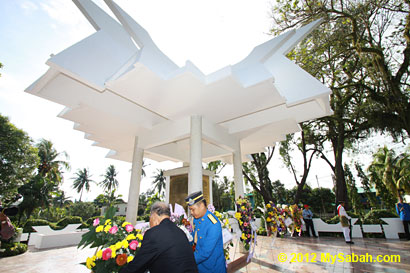
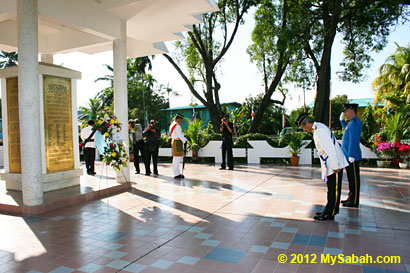
Above: wreath-laying ceremony by different organizations and individuals.
Lastly, the ceremony ended with the sounding of the Last Post and Rouse. You may watch the 2-min video below:
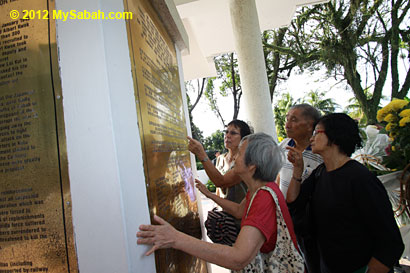
Above: people looking at the plaque containing the names of their relatives. Some of the victims were folks always hang up in kopitiam (coffee shop) together.
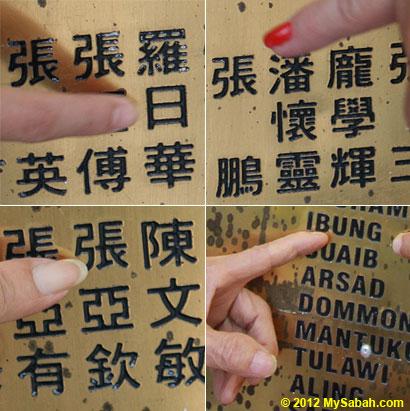
There are fathers and sons among the names. Ms Lo says her brother died at age of 17 with his father in this execution.
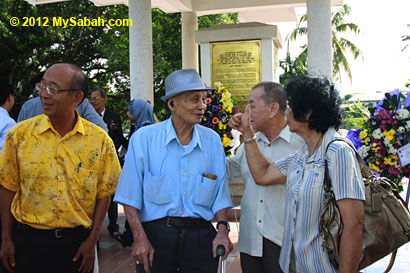
Lee Min (李明), the 91-year-old survivor of Kinabalu guerilla, always comes every year in honor of his fallen comrades, though his health condition is not ideal and requires the aid of a walking stick. He said, “I miss my friends very much and I will come here every year as long as I live.”
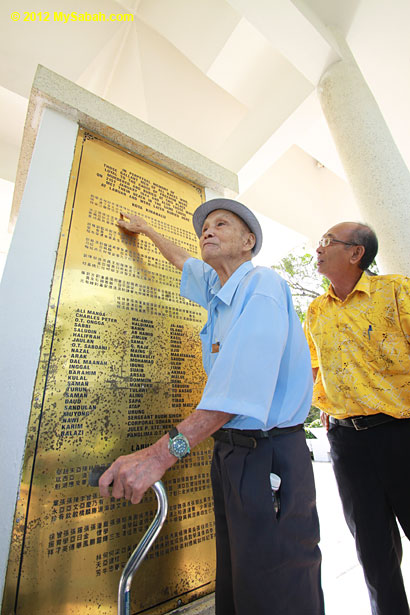
His eldest son, Lee Yaw Koo (right), 61, said his father always pay homage to his fallen comrades each year.
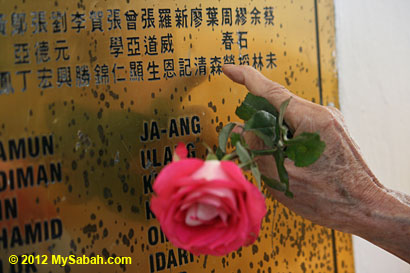
Lee Min can point to the names and tell stories about them, like who was forwarder and who was his captain.
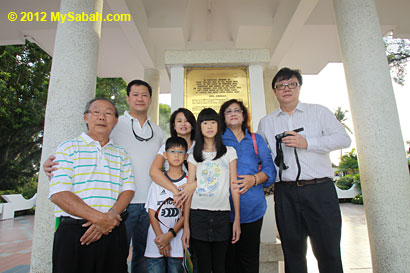
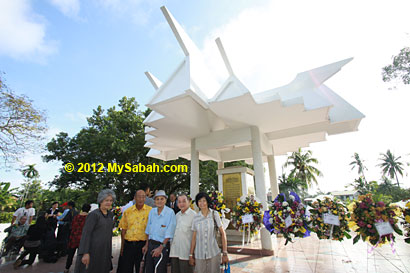
Above: relatives and descendants of fallen heroes
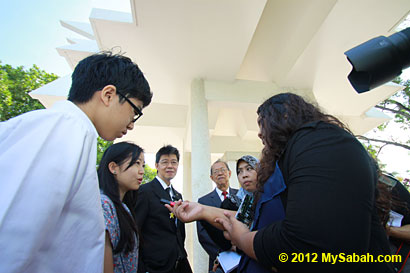
Reporters interview grand daughter (Rachel) of Datuk Fung Khyam Shen (back), 82, from Singapore, whose elder brother Fung Khung Shen was among those killed in the massacre. Datuk Fung said, “I can forgive them but I just can’t forget… I still feel bitter and my family is very sad about the tragedy.”
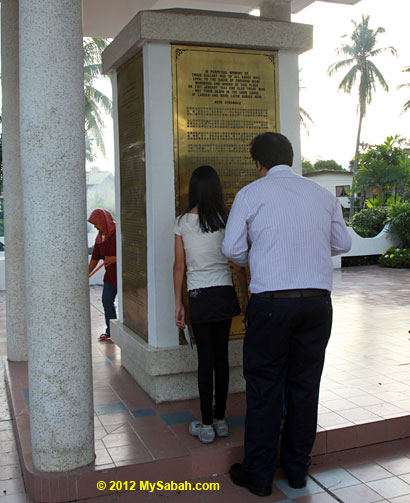
The father told his daughter about the heroic incident of these people. It’s important to educate the young about the brutality of the war so they won’t repeat the history. Many years ago, I was watching a sad movie about World War II. There was a group of ignorant youngsters smirked and made fun of the movie, as if they were watching a comedy. I don’t blame them for being lack of empathy, because they have no f*cking idea about the history. War is something so distant and unreal to them.
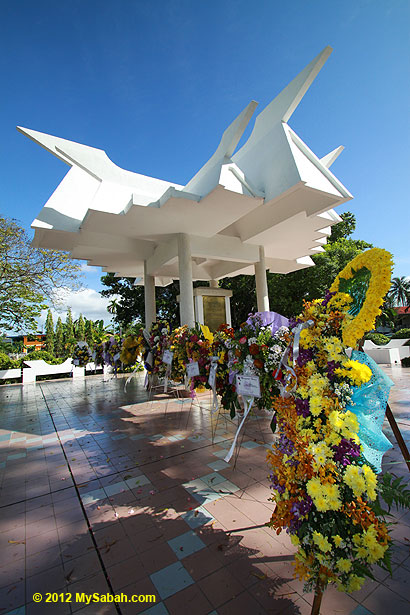
Petagas War Memorial was built in 1946 and the 1st memorial service started in 1948. That year the response was overwhelming. Busloads of people, friends and families of the dead came and they cried and comforted one another. Nowadays, except the relatives and descendants, there are very few people come here to pay tribute. There are many government people but they attend the service for the seek of formality. Hope you will come after you read the story here.
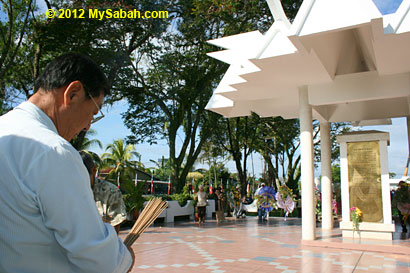
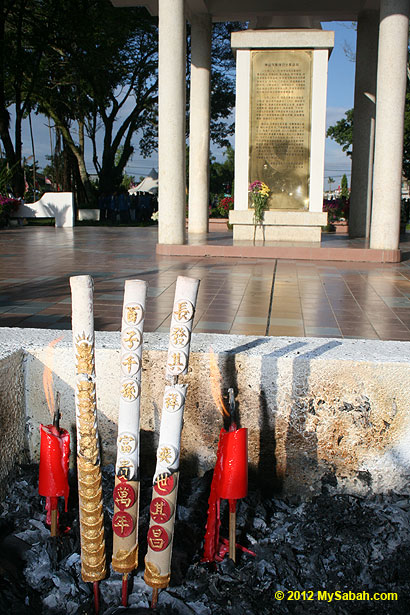
The public should show their appreciation to those who sacrificed their lives for our homeland. FYI, the memorial service starts at 8am in Petagas War Memorial Garden on 21 Jan every year. Funeral attire advised.
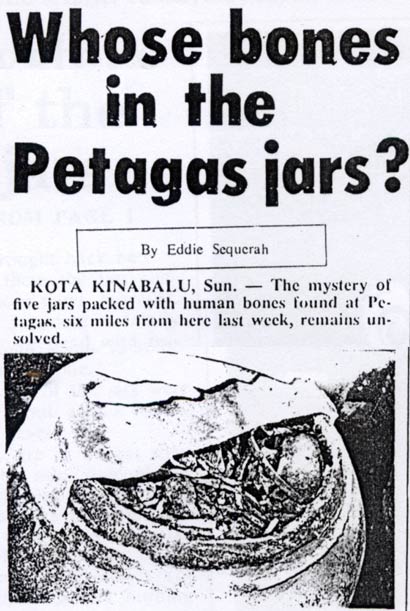
Just an interesting story. In 1979, the new war memorial was under construction for an upgrade, and the workers unearthed 5 big jars of human bones. Everyone didn’t know whose bones were those and it became a mystery for a while, until a Tawau bookseller, Peter Chong Yuk Kiong explained that these are the bones of 122 prisoners who died in Labuan. Their bones were collected and sent to Petagas for burial in 1949.
The war monument has a plaque on each side. I posted them here for your viewing:
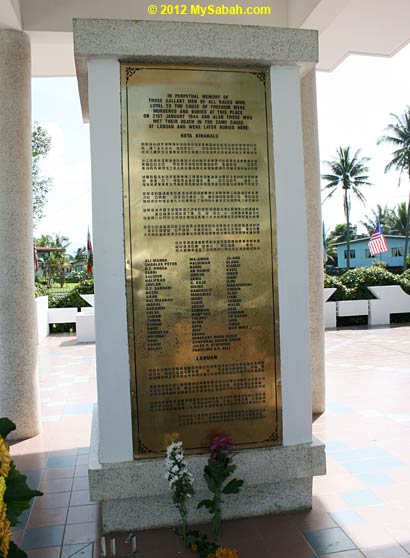
Side 1: names of the victims (Click Here for bigger picture)
Most are Chinese and the names don’t seem to be in any order. There are also names of islanders consists of Suluk, Bajau and Binadans people from Sulug, Dinawan and Mantanani islands. They also took part in Double Tenth Revolt by launching attack from the sea. After the rebellion, the Japanese army took revenge by burning the houses and gun down most men on those islands. All the adult males on Sulug island had been killed and an 11-year-old boy became headman!
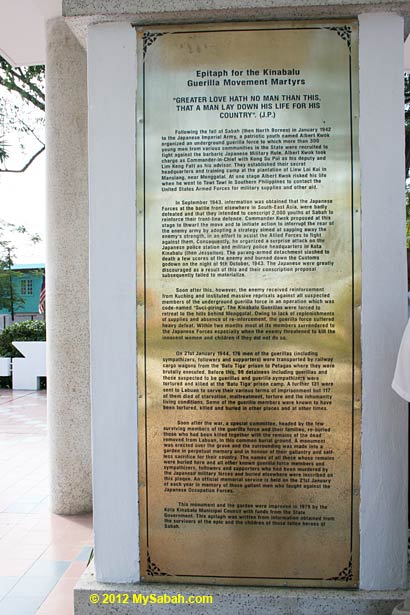
Side 2: epitaph on war monument (Click Here for bigger picture)
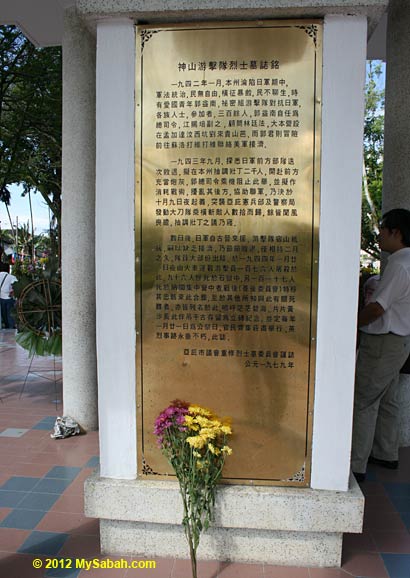
Side 3: epitaph in Chinese language (Click Here for bigger picture)
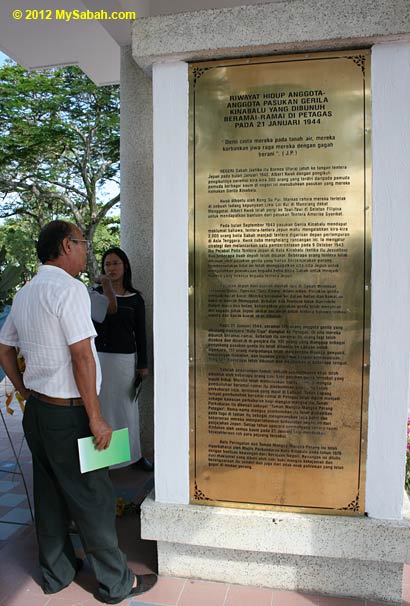
Side 4: epitaph in Malay language (Click Here for bigger picture)
The Japanese officers who responsible for this massacre were convicted in Singapore in 1946. The lieutenant and the sergeant were sentenced to death and were hanged. Others implicated received long sentences of imprisonment.
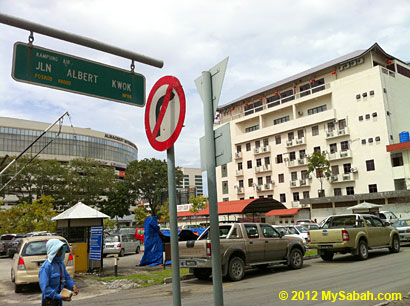
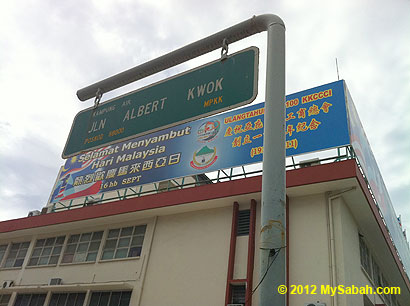
In Kampung Air of Kota Kinabalu city and next to building of Kota Kinabalu Chinese Chamber Of Commerce & Industry, you can find a street named after Albert Kwok.
Because of Double Tenth Uprising, Japanese abandoned the ideas of conscripting 2,000 Chinese youth into army, to use them as cannon fodder to fight a losing battle against Allies in South-East Asia. They also stopped forcing local women to become comfort women (prostitute) for Japanese soldiers.
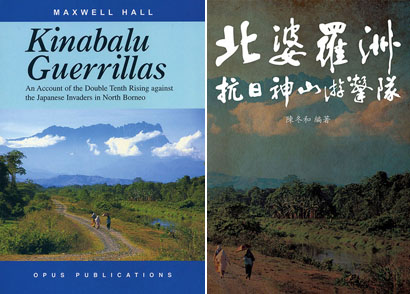
Above: for further reading, you may check out: (1) One Crowded Moment of Glory : The Kinabalu Guerillas and the 1943 Jesselton Uprising, written by Danny Wong Tze Ken and published by UM Press (ISBN: 9789674880866) in 2019, Price: RM58, (2) Chinese version of book no.1. 神山游擊隊: 1943年亞庇起義 (ISBN: 978-983-3987-64-1), (3) Kinabalu Guerrillas (An account of the Double Tenth Rising against the Japanese invaders in North Borneo), published by OPUS Publications (ISBN: 978-983-3987-15-3), cost RM20, or (4) 北婆罗洲抗日神山游击队 Chinese version, costs RM39 (ISBN: 978-983-3987-34-4).
Besides old news clip, I also used the first book as a reference for this writing. Please correct me if there is any mistake.
More Photos
You may check out my photo album if you want to see more nice pictures:
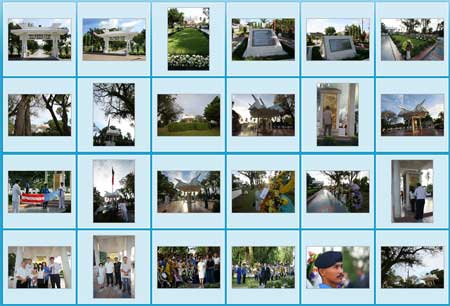
Photos taken in Petagas, Sabah, Malaysia Borneo
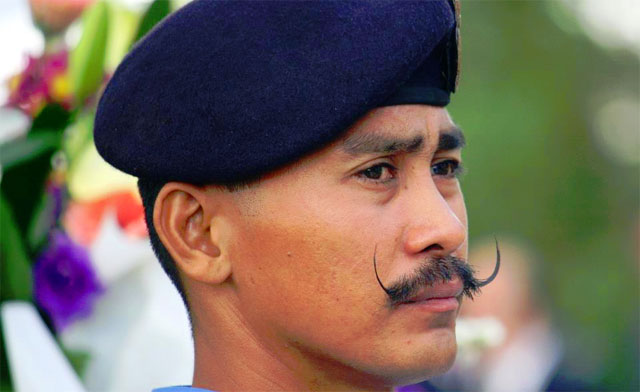

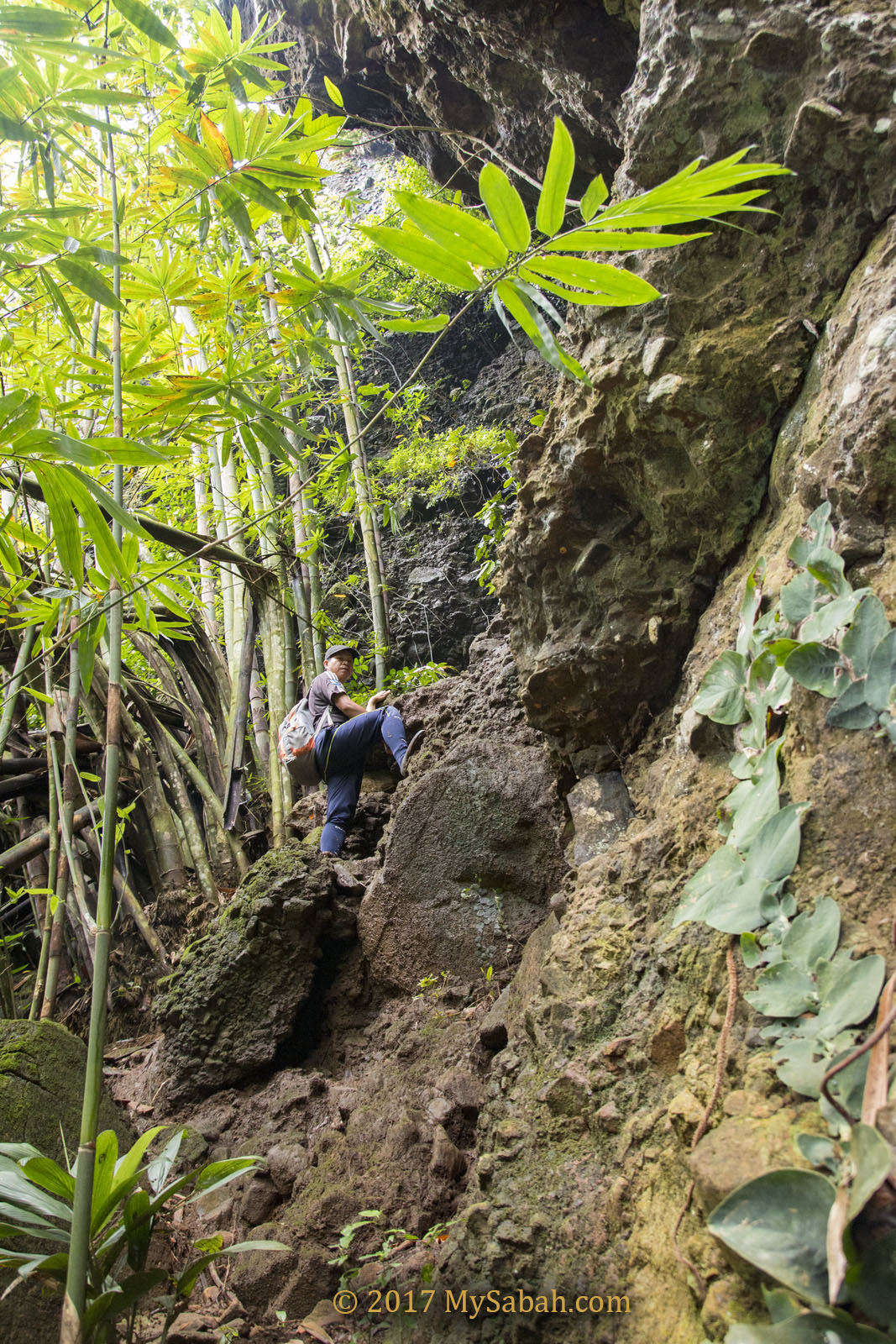


Thank you for such an interesting post. I am teaching History in Japan to Japanese students & am planning to visit Sabah and the Petagas memorial in February. I really appreciate your information.
My pleasure Ponkanchan San. Welcome to Sabah! The Memorial is just in front of our international airport in Kota Kinabalu city. ^_^
Thanks! I will most likely be there next Sunday. Looking forward to visiting Sabah very much.
Welcome to Sabah Cecilia. 🙂 Sometimes Kota Kinabalu City Hall (DBKK) might lock the gate. You may call them at 088-521800 before you visit.
Hi Murphy
Thank you for the story.
I wrote about history concerning north Borneo, Sarawak, Sabah and Brunei in my blog.
I am still learning more.
http://hinterindien.com in German.
Kind regards
Low
You are welcome Low. There are very few people study the history of Sabah. Hope your writing will complete the picture. 🙂